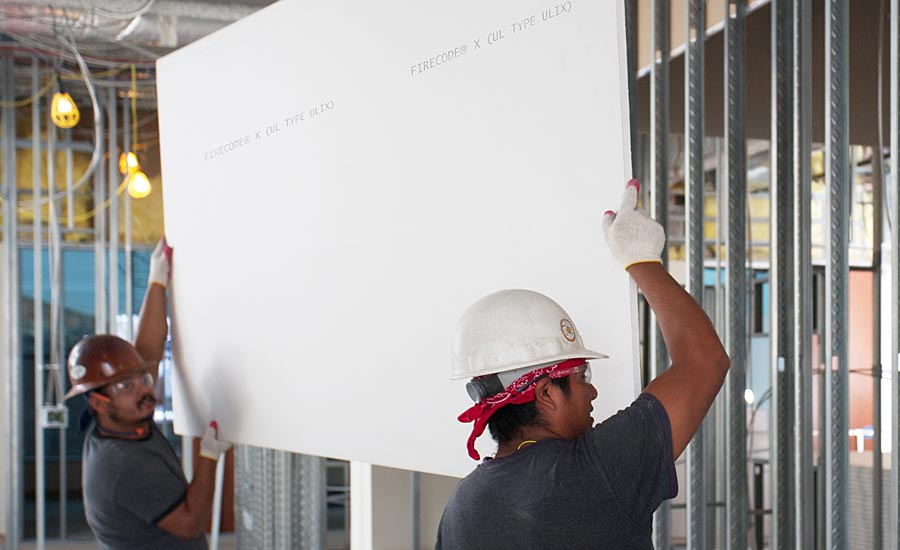Every business looks for opportunities to grow revenues, increase profitability, and boost market share. Manufacturers strive for a competitive edge through innovative products and services to secure more business. A key way to accomplish this is by creating new technologies that are faster and easier to install, improve productivity in a challenging labor market, and that are sustainable. And that’s all fine and dandy, but what’s in it for you? These types of advanced products and technologies will typically cost more than the materials you use today. That is why it is so important for manufacturers and contractors to work together to bring new and improved products to the market that’s benefits far outweigh its costs.
As a contractor, you have hopes and dreams for profitability and sustained growth. Whether you are interested in expanding your business by winning more jobs, improving profitability with your current base or a combination of both, all depends on your willingness to try new products. When you receive the call to learn about a new product, you must evaluate the benefits of the new product and how its benefits align with your business goals.
Manufacturers spend time and resources to intimately understand the contractor’s needs. They look to identify unmet needs that may help jobs run more efficiently and most importantly, improve your profitably. The industry at-large benefits when manufacturers and contractors partner together to bring forward new innovations.
Partnering Manufacturers and Contractors
So how does this happen? With every call made by a manufacturer’s sales team, they are trying to understand your business operations, needs, and wants. They are looking to find opportunities to sell more products, ultimately securing a greater share of your purchases. Good reps will ask a lot of questions and focus on upcoming and future jobs. They are looking for opportunities to ensure you purchase their products. When you begin to speak of challenges or problems, their problem-solving instincts kick-in. They will do their best to suggest multiple products and systems to solve the problem.
However, there are times when their current products do not meet your needs. In those situations, they convey this information back to their respective technical teams within their organizations. The technical teams thrive on receiving market intelligence on the contractor’s needs and wants. These insights drive future product improvements and more importantly, new innovations.
Now, about the technology team. Their job is to make product improvements, reduce manufacturing costs, and drive patented innovations. This can only be achieved with customer input. Every company feels they understand their customer’s needs. Yet, few do this well, except for customer focused manufacturers who regularly send their technical staff to jobsites. During their field visits, they will provide technical support from training to problem solving, with the goal of market intel. This information gathering is a key opportunity to understand your needs and wants. The technical team will ask questions pertaining to what you did in a certain situation, how much time it takes you to achieve certain tasks, and what they can change about their product to serve your needs better. Taking the time to give your feedback and answer the questions thoughtfully helps drive innovation in future products.
What You Can Do
A manufacturer may even want to show you a new product and ask you to use it and then provide your feedback. This is to gain greater insights to better serve your needs and fine tune the product.
“Before introducing any new product we start the process with voice of customer insights, identifying, solving, and delivering solutions to meet their needs and wants,” according to Director of Innovation, Jason Roxburgh, Grabber Construction Products.
After multiple customer interactions and feedback from other contractors, the technical team and business leaders decide to move forward with development of the new product. Development starts on a bench in a lab and then goes to a plant for numerous trial production runs.
 Photo courtesy of USG Corporation
Photo courtesy of USG Corporation
Getting the Product Ready
The trial run product is evaluated for multiple performance characteristics. This is an iterative process and can take months to years to perfect before a product is ready for a customer to use on the job. Once the product passes all internal performance requirements, the product is typically submitted for third party independent testing. Think of this as a stamp of approval that the manufacturer’s claims have been tested and verified.
When the product is certified, other teams of people work on manufacturing equipment and processes at one time or multiple plants to service the market’s needs. Sales and technical literature are developed, which include data sheets/submittals, technical drawings and details, installation guides, safety data sheets, and warranty information.
Once all the technical selling materials are completed, two types of selling initiatives take place: architectural and contractor. Specific reps are charged with making presentations to architects to get the product specified. This takes place in the form of one on one presentations, taking the architect to lunch, any tactic you can use to get in front of an architect to pitch them your product. The goal is to get the architect to approve and specify the new product for future jobs.
Another sales team creates a list of target contractors who would be well-suited to evaluate the product for installation on a trial job. The evaluation process is comprehensive and strategic. The sales team takes the product into consideration first. They ask themselves: Is this product suited for a specific vertical market such as educational, medical or workplace environment? Are there specific contractors who specialize in these verticals? What is the manufacturer’s relationship with the prospective contractors? Is it a longstanding and deep relationship, or is the relationship not as established but the contractor is the big player in the market? Have they been asked to evaluate other products recently? Should new contractors be brought into the evaluation process? Is starting with smaller contractors the right approach for this product?
As you can imagine, there are a lot of decisions that must be made before the sales team makes that introductory call.
Selling the Product
There may be one or more markets where the initial selling effort takes place. Once the targets are identified by a market, a couple of different scenarios can take place. A rep may bring materials to the contractor’s facility. They will demo the product and perhaps leave some materials to evaluate. Other situations may take place depending on the product, where you are invited to a facility or unoccupied warehouse and instructed by a team of technical experts to install the product. The goal here is to see how you interact with the product while the technical team is looking for new A-ha! opportunities.
In this phase, the manufacturer is looking for any issues that may surface and should be addressed before considering the product clear for market introduction. Sometimes an independent third party will be there to conduct timed studies on installing the existing product and the new product. This may be repeated with several contractors to get the true labor and productivity savings from the new product to make a claim, such as “tested and proved, this [product] installs 20 percent faster.”
According to Team Leader of Drywall Division, Carl Spaete, BNBuilders, of southern California, “When a manufacturer comes to us with a new product promising productivity gains or scheduling reductions, we are open to try the product. We have found while a new product’s cost may be higher, we see the back-end benefits of labor savings which becomes a more controllable portion of our overall cost.”
But back to the original question of the article. What’s in it for you?
So … What's in it for You?
Well first and foremost, the opportunity to closely partner with a major manufacturer can not only improve your revenue and profitability but it can open more doors.
Being first in your market with a new product with proven performance benefits can set you apart from your competition. You can bid jobs more accurately, improve profitability, productivity and ultimately sell more jobs before anyone else catches on. This is your opportunity to deepen relationships with GCs and become the go-to contractor for future jobs months ahead of other contractors.
When you participate in a new product trial, you are providing the manufacturer with critical input to ensure the product they are about to market performs as promised. You essentially become a trusted advisor to the manufacturer.
Vice President Corporate Innovation Center Kumar Natesaiyer of USG Corp. says, “Getting the true insights from contractors during trials is critical to our process. We select contractors who will be honest and tell us what works and what does not before we commercialize a product.”
For the first few jobs, manufacturers will be more than happy to assist getting their product installed. They may send gratis materials, help offset the cost of materials, assist with ordering the right materials and quantities, and provide on-sight support during the installation. You may even get some new equipment required for the new product.
As a “thank you” for using the product, you may be asked to participate in their marketing materials. Manufacturers like to create project profiles in videos and written form as promotional materials. The contractors who participate in the trials are highlighted in these marketing materials. This becomes a marketable opportunity for you with GCs. Repurposing the manufacturer’s marketing materials with your employees on camera or quoted in a promotional piece can be used to promote your business and demonstrate the deep relationship you have with a leading manufacturer while bolstering your relationships with GCs.
Your Call to Action
Manufacturers will continue to develop new and innovative products and they need you to participate for the betterment of the entire industry. There are numerous opportunities for you to participate in trials and product development efforts. It is all about relationships between you and the manufacturers you support. If you have not participated in a product trial, speak to a manufacturer’s sales rep and inquire about future opportunities. Relationships go a long way in this business and there is something in it for everyone—most importantly—you.






Report Abusive Comment